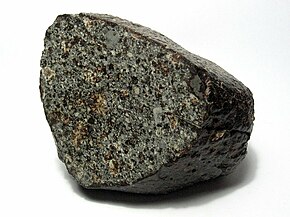| Ordinary chondrite | |
|---|---|
| — Class — | |
 Ordinary chondrite NWA 869 | |
| Compositional type | Stony |
| Type | Chondrite |
| Parent body | unknown |
| Alternative names | O chondrites |


The ordinary chondrites (sometimes called the O chondrites) are a class of stony chondritic meteorites. They are by far the most numerous group, comprising 87% of all finds. [1] Hence, they have been dubbed "ordinary". The ordinary chondrites are thought to have originated from three parent asteroids, with the fragments making up the H chondrite, L chondrite and LL chondrite groups respectively. [2]